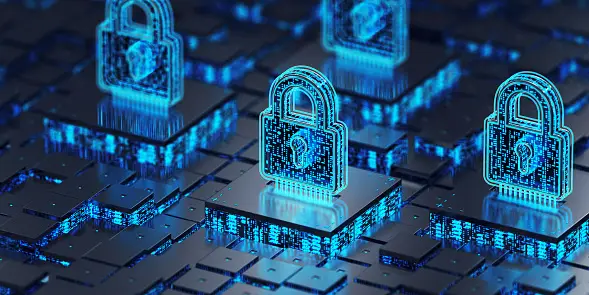
Most business activities run on the web, exposing their information and assets to different digital dangers. Since the information and framework assets are the support points after which the association works, it’s a given that a threat to these substances is, to be sure, a danger to the actual association.
A danger can be anywhere, from a minor bug in a code to a perplexing cloud commandeering risk. Risk evaluation and assessment of the expense of reproduction assist the association with remaining ready and looking forward to possible misfortunes.
In this way, knowing and forming the objectives of network safety well defined for each association is vital to safeguarding significant information.
Network safety is training for the insurance of touchy data on the web and gadgets, defending them from assault, obliteration, or unapproved Access.
The objective of online protection is to guarantee a gamble-free environment and create a climate for keeping information, organizations, and gadgets prepared for digital dangers. Allow us to find out about the objectives of network protection.
What are the objectives of network safety?
The three goals of cybersecurity’s definitive objective of network safety is to safeguard the data from being taken or compromised. To accomplish this, we check out three essential objectives of network safety.
- Safeguarding the Privacy of information
- Protecting the Respectability of information
- Confining the Accessibility of information just to approved clients
There are three objectives for network safety.
What are the three objectives of network safety? A Presentation
Embracing the Computerized World: A Situation with Two Sides
Embracing innovation has transformed into a situation with two sides in the rapidly changing computerized scene of the present. While it gives an abundance of benefits and valuable open doors, the three goals of cybersecurity it likewise conveys us as defenseless against developing intimidations that could risk our security and protection. This is where online protection enters the picture, going about as a hindrance to defend us from dangers present in the computerized scene.
Rising Dangers in the Advanced Scene
The danger presented by digital dangers is going to increase as we become all the more mechanically reliant and interconnected. Our computerized foundation has shortcomings that malignant entertainers, equipped with state-of-the-art apparatuses and strategies, use with the end goal of getting Access without approval, degenerating delicate information, and obstructing advanced exercises. To safeguard our internet-based security, we should emphasize network safety measures because of the recurrence and complexity of these dangers. Figuring out Network protection
What is network safety?
Before diving into the intricacies of network safety and addressing the inquiry “What are the three goals of cybersecurity“, fathoming its foundations is pivotal. A gathering of practices, instruments, and protections called “online protection” works to stop unlawful or threatening exercises on computerized frameworks, organizations, and information. The assurance of data’s availability, classification, and uprightness in an advanced climate is its essential objective.
For a more point-by-point outline of network protection and how it functions, take a look at our past article, “How Online Protection Works: All That You Really Want to Be Aware.”
What are the three objectives of network safety?
What are the three goals of cybersecurity? To comprehend the three objectives of network protection, we should analyze online protection’s three essential precepts—classification, uprightness, and accessibility—to appreciate its objectives.
Privacy
Security assurance for sensitive information is critical in the advanced world. A serious protection break might bring about monetary misfortune and reputational harm. Solid access limitations and encryption strategies are utilized to guarantee secrecy and stop the unlawful admission of delicate information.
Safeguarding Delicate Data: Security Issues
When individual data is advancing at a rising rate, safeguarding client information is more significant than at any other time in recent memory. To forestall the abuse of delicate data, it is vital to carry out network protection measures, including information encryption, safe information stockpiling, and severe client confirmation methodology.
Executing robust access controls to forestall unapproved Access
Getting to essential organizations and information without approval can have horrible repercussions. Associations can undoubtedly lessen the probability of undesirable breaks by laying areas of strength for our controls, like multifaceted confirmation, job-based limitations, and interruption location frameworks.
Honesty
One more significant goal of network safety is to keep up with reality and the unwavering quality of information. Information control or altering endeavors by noxious gatherings could severely affect the two people and organizations. Carrying out various procedures and advancements is essential to safeguarding the respectability of information.
Veracity of Information: Laying out Dependability
All through its lifecycle, information honesty guarantees that the data is exact, solid, and far-reaching. Methods like information approval, checksums, and information hashing are fundamental for keeping up with the exactness of information and ensuring that it has not been modified.
Mitigating Altering Dangers: Methods for Safeguarding
To moderate the dangers connected with information altering, associations depend on methods like advanced marks and blockchain innovation. Computerized marks provide a cryptographic instrument to guarantee the validity of advanced records, while blockchain innovation improves information trustworthiness through decentralized and unchanging records.
Accessibility
The consistent accessibility of advanced assets and frameworks is vital for the two people and associations. Refusal of administration (DoS) assaults and other troublesome occasions can prompt interference, causing monetary misfortunes and reputational harm. Guaranteeing accessibility requires making arrangements for overt repetitiveness, fiasco recuperation, and influential organization design.
The Lifesaver of Computerized Activities: Keeping up with Access
Accessibility alludes to the continuous accessibility of advanced frameworks and assets. Associations put resources into excess frameworks, failover components, and debacle recuperation intends to limit free time and guarantee constant admittance to essential assets.
The Effect of DDoS Assaults: Supporting Versatility
Disseminated refusal of administration (DDoS) assaults have arisen as a considerable danger lately, flooding frameworks with gigantic traffic to upset administrations. Moderation procedures, for example, traffic separating and load adjusting, assist associations with enduring the effect of these assaults and keeping up with their accessibility.
Interdependencies and Covers
While secrecy, trustworthiness, and accessibility are unmistakable objectives of network safety, they are interconnected and cross over in numerous ways. The cooperative energy between these three support points is critical to fostering a hearty and thorough online protection procedure. Understanding where these objectives adjust and veer permits associations to create custom-made ways to deal with and safeguard their advanced resources successfully.












